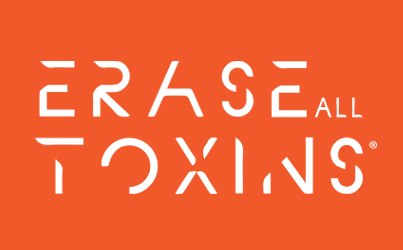There’s more to you than meets the eye
We (try to) exercise regularly. We eat healthily. We even detox our relationships if they become toxic. And yet, despite all this, our bodies are still exposed to thousands of toxic chemicals. What’s going on?
How do these chemicals get into our bodies?
We are what we eat
Chemicals from plastic food packaging are transferred into our food and then we eat them. Studies by Erase all Toxins found toxic chemicals from food packaging in the urine of test participants.
The chemical cost of beauty
Cosmetics, perfumes and hair care products are all big sources of chemicals. Women are exposed to an average of 168 chemicals every day.
Something in the air
Household dust contains chemicals from furniture, electronics and cleaning products. Flame retardants and plastic softeners (known as phthalates) are commonly found in the dust in our homes.
Why are these chemicals in our food, cosmetics and homes?
These chemicals do have a purpose. In cosmetics, they prevent the growth of bacteria so your products last longer. Flame retardants prevent our furniture from catching fire. And phthalates make plastic soft and flexible. That’s the good news, but there’s a more worrying side to these chemicals
The dark side
Prominent scientists and medical professionals are concerned about the negative effects these chemicals have on our health. They link our daily exposure to toxic chemicals to fertility problems, cancer and impaired brain development in children.
How it’s affecting our health
Over the past 50 years, there has been massive increase in hormone-related cancers like breast, prostate and testicular cancer. There has been a similar, unprecedented rise in fertility problems and neurodevelopmental disorders. These conditions are increasing faster than can be explained by our genetics or lifestyle. According to authoritative bodies such as the World Health Organisation and the Endocrine Society, our increased exposure to industrial chemicals has an important role to play.
5 key facts about our chemical-filled world
- The global production of chemicals increased 57-fold (pdf) from 1950 to 2000;
- According to the European Commission, 60% of the chemicals currently on the EU market are not safe for our health (pdf) or for our environment;
- Sperm counts have dropped by half (pdf) in the last 50 years;
- Globally, breast cancer rates have increased significantly over the last 40-50 years;
- Testicular cancer, the most common cancer in young European men, has risen dramatically over the last decades and is expected to increase 13% by 2035.
But don’t despair – there is something we can all do about it.

